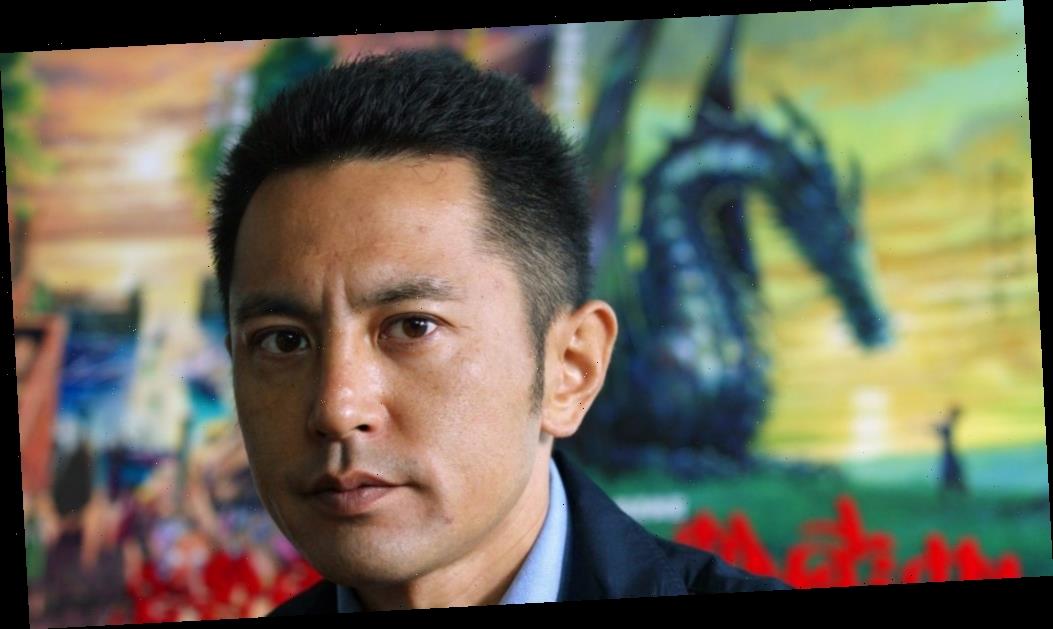After directing the television series Ronja, the Robber’s Daughter for Japanese network NHK BS Premium, Gorô Miyazaki returned to his roots at Studio Ghibli, looking to take on his first film in “full 3D CG.”
For the son of legendary animator Hayao Miyazaki—who helped turn Ghibli into an internationally respected animation studio—that project would end up being an adaptation of Diana Wynne Jones’s novel, Earwig and the Witch.
“Hayao and [producer] Toshio Suzuki came to me with the suggestion that this novel was likely a good story for a film adaptation,” the younger Miyazaki says. “I loved the fact that the protagonist wasn’t your typical ‘good girl,’ in the sense that she’s always right, and does the correct thing. She’s very fun.”
Gorô Miyazaki’s follow-up to the acclaimed features Tales from Earthsea (2006) and From Up on Poppy Hill (2011) centers on Earwig, a 10-year-old orphan girl in 1990s England, who grows up without understanding that her mother was a witch. After being adopted by another witch named Bella Yaga, she’s thrust into an enigmatic world of magic, coming closer to the truth of who she really is.
For Miyazaki, the process of fleshing out the visual world of Earwig was one of “trial and error,” although heading into the project, he knew how he wanted to use the medium of 3D CG. “With a lot of the animation created here in Japan, the way they use CG, the quality is always based on the approach that was done with hand-drawn animation,” he says. “So, they’re just kind of replacing the process of what they used to do manually, to having the computer do that for them.”
Not wanting the to go in that direction, the director says he also knew that he wasn’t going to try to create something “as detailed and perfected” as the work of Pixar. “Going full 3D CG, doing photoreal visuals, didn’t seem right. I gravitated more towards stop-motion animation, using puppets,” he shares. “That was more what I related to, so I referenced works by studios like Laika and Aardman, in that sense.”
In taking on 3D CG animation for the first time, there were a number of challenges with which to contend. “[One] was that I didn’t want to make visuals that would alienate the people who love Studio Ghibli films,” Miyazaki says. “We didn’t want to go too far away from what the studio’s aesthetic has always been, so we were always thinking, what can we do that would stay true to the Studio Ghibli aesthetic, but still in 3D CG?”
Another major challenge had to do with the fact that Studio Ghibli had never made a film in this style before—and therefore, they had no infrastructure at the outset to support such an endeavor. “I had to start from scratch, to create a team to take on this project, and that took a lot of time and effort,” Miyazaki notes. “On the other hand, all the people around us didn’t understand what exactly we were doing because it was so foreign to them. So, in that sense, it gave us a lot of freedom to do whatever we wanted, without people interfering.”
On the level of craft, the director also had to get used to the specific limitations that come with a 3D CG pipeline—figuring out, for example, how to achieve the right balance of brightness and contrast to fit each scene. “A lot of times, the story is set in a very dark room, and we have the characters performing in these dark environments, so it was very hard to find the right brightness or darkness,” he says. “When you make it too bright, it shows the entire room and it’s too revealing, and it’s not really good, and then if it’s too dark, you’re only staring at a very dark screen. So, all through the process, it was very hard to find the right brightness.”
Looking back now on his time with Earwig, Miyazaki finds that one of the highlights was the voiceover process he engaged in with his Japanese cast. “In creating animation, a lot of the process is very meticulous planning, and building things, one thing after the other, so there’s not much space for spontaneity or improvisation,” he says. “The liveliness and the spontaneity, we can only add through the music or the voiceovers, so when we have actors that come in and contribute, on the spot, with ad-libs and improvisation, that adds a whole new richness to the film.”
The other highlight, of course, was bringing Studio Ghibli through all the logistical, technical and creatives challenges that came with the 3D CG transition. “I think the strength and the beauty of 3D CG animation is the [breadth], the diversity of how much acting and performance you can pull out of a character,” he says. “I really enjoyed [crafting] the sequences where Earwig is doing a lot of different expressions, and showing different emotions—basically, acting.”
In terms of a next project, Miyazaki is undecided. What is clear, though, is that we probably won’t be seeing an Earwig and the Witch sequel any time soon. “I’ve heard a lot of people who’ve seen this film saying, ‘Are you making a sequel?’ And that’s a little troubling for me,” the director deadpans. “It took four years to make this film, and when you think of spending your next four years doing a sequel, while it’s appealing, I’m not that young.
“So, I would rather spend my time doing something challenging,” he adds, “something new.”
Read More About:
Source: Read Full Article








